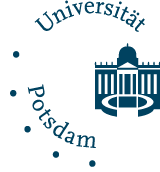11
differently, even though both groups were members of the same national culture. They also found that bilingual speakers of both languages were different from either unilingual group.
The theory of linguistic relatıvism suggests that a specific language could predispose its speakers to distinct interpretations of uncertainty expressions and that different languages could lead to different interpretations of uncertainty expressions. As language is intertwined with culture, thıs leads to the notion that members of different national cultures with different languages, 1.e., different language-cultures, could differ in the meaning attached to uncertainty expressions.
The countries selected in this study have different languages(English and German) and have been classified as being members of two distinctly different cultural areas(Anglo and Germanic)(Hofstede, 1980). The question arises whether the different language-cultures in which U.S. Certified Public Accountants(CPAs) and German-speaking Wirtschaftsprüfer(WPs) live and work affects their perception and interpretation of uncertainty expressions found in IAS.
The IAS uncertainty expressions examined ın the current study are described in the next section. IDENTIFICATION OF UNCERTAINTY EXPRESSIONS
The official language of the IASC is English and IAS are published in that language. In 1997, the IASC produced an official German translation of the 33 extant IAS(Schäffer-Poeschel, 1998). This was the first and, at the time, only official translation of IAS into another language. An examination of these standards resulted in the set of 16 uncertainty expressions used in this study(see Table 1). Table 1 indicates that there is some difficulty in translating certain English expressions into German. For example, the single word"remote" is translated into the three
word phrase"Wahrscheinlichkeit äußerst gering"(literal translation="probability extremely
